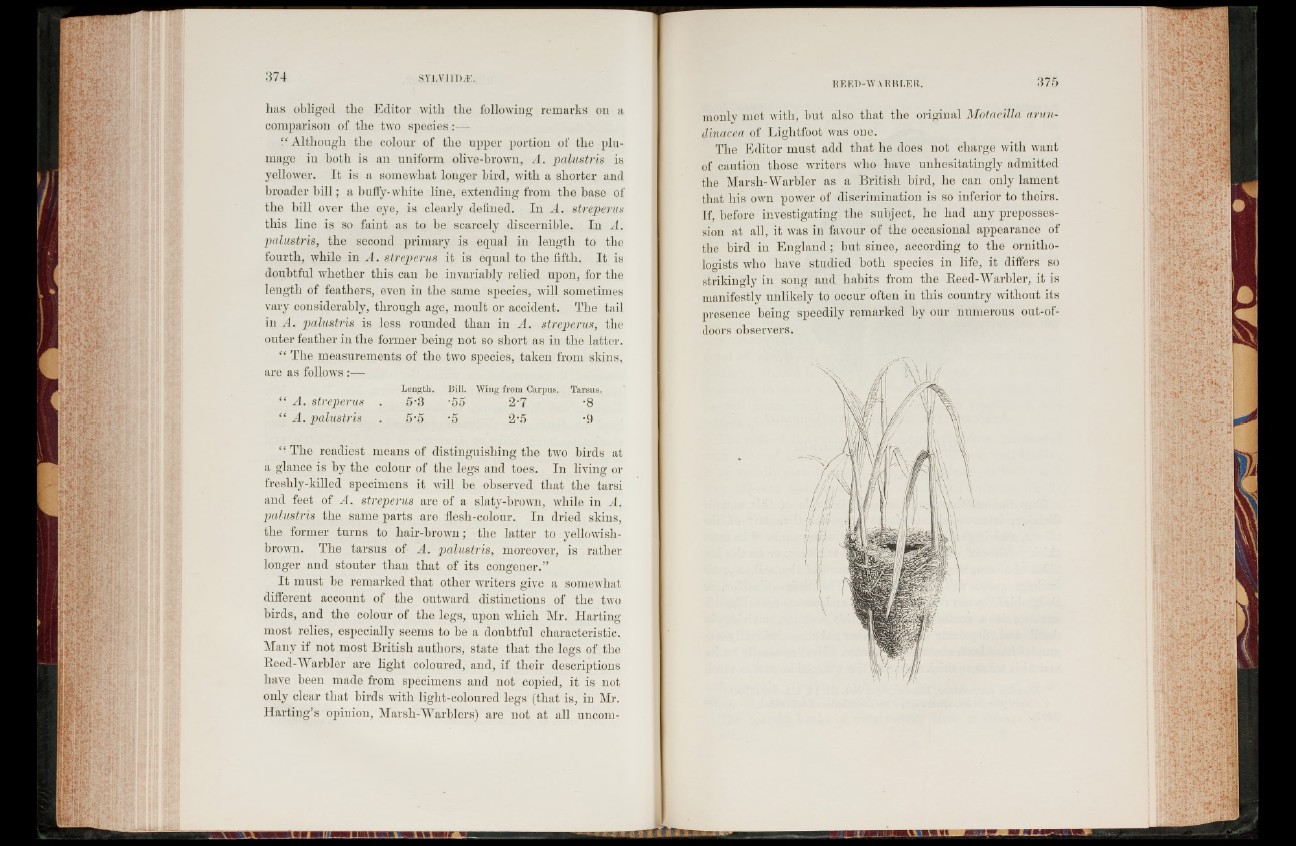
has obliged the Editor with the following remarks on a
comparison of the two species:—
“ Although the colour of the upper portion of the plumage
in both is an uniform olive-brown, A. palustris is
yellower. I t is a somewhat longer bird, with a shorter and
broader bill; a buffy-white line, extending from the base of
the bill over the eye, is clearly defined. In A. streperus
this line is so faint as to be scarcely discernible. In A.
palustris, the second primary is equal in length to the
fourth, while in A . streperus it is equal to the fifth. I t is
doubtful whether this can be invariably relied upon, for the
length of feathers, even in the same species, will sometimes
vary considerably, through age, moult or accident. The tail
in A. palustris is less rounded than in A. streperus, the
outer feather in the former being not so short as in the latter.
“ The measurements of the two species, taken from skins,
are as follows :—
Length. Bill. Wing from Carpus. Tarsus.
“ A. streperus . 5-3 -55 2'7 -8
“ A. palustris . 5-5 -5 2-5 -9
“ The readiest means of distinguishing the two birds at
a glance is by the colour of the legs and toes. In living or
freshly-killed specimens it will be observed that the tarsi
and feet of A. streperus are of a slaty-brown, while in A.
palustris the same parts are flesh-colour. In dried skins,
the former turns to hair-brown; the latter to yellowish-
brown. The tarsus of A. palustris, moreover, is rather
longer and stouter than that of its congener.”
I t must be remarked that other writers give a somewhat
different account of the outward distinctions of the two
birds, and the colour of the legs, upon which Mr. Harting
most relies, especially seems to be a doubtful characteristic.
Many if not most British authors, state that the legs of the
Reed-W arbler are light coloured, and, if their descriptions
have been made from specimens and not copied, it is not
only clear that birds with light-coloured legs (that is, in Mr.
Harting’s opinion, Marsh-Warblers) are not at all uncomUEED
WA RBI/Eli. 375
monly met with, but also that the original Motacilla arun-
dinacea of Liglitfoot was one.
The Editor must add that he does not charge with want
of caution those writers who have unhesitatingly admitted
the Marsh-Warbler as a British bird, he can only lament
that his own power of discrimination is so inferior to theirs.
If, before investigating the subject, he had any prepossession
at all, it was in favour of the occasional appearance of
the bird in England; but since, according to the ornithologists
who have studied both species in life, it differs so
strikingly in song and habits from the Reed-Warbler, it is
manifestly unlikely to occur often in this country without its
presence being speedily remarked by our numerous out-of-
doors observers.
;1 HIS
I
. •
I
■ i I
i
. -.t.iNt
■■ S'..: 7
■ •:
•*' .
; ' « .V* :•%*.
• -
■y r ' !
*
i> »1
■ ■
>•..
.
SS
■ I
w .....
IJ